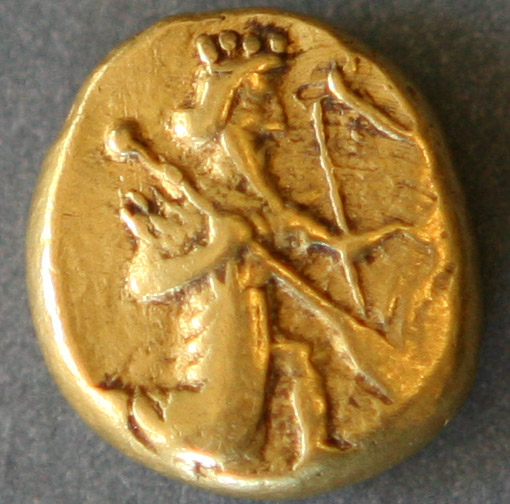Gold coins
Enlarge text Shrink textA gold coin is a coin that is made mostly or entirely of gold. Most gold coins minted since 1800 are 90–92% gold (22‑karat), while most of today's gold bullion coins are pure gold, such as the Britannia, Canadian Maple Leaf, and American Buffalo. Alloyed gold coins, like the American Gold Eagle and South African Krugerrand, are typically 91.7% gold by weight, with the remainder being silver and copper. Until about the 1930s, gold coins were circulation coins, including coin-like bracteates and dinars. Since then, gold coins have mainly been produced as bullion coins for investors and as commemorative coins for collectors. While modern gold coins are still legal tender, they are not used in everyday financial transactions, as the metal value invariably exceeds the nominal value. For example, the quarter-ounce American Gold Eagle has a denomination of $10, but a metal value of approximately $500 (as of January 2024). The gold reserves of central banks are dominated by gold bars, but gold coins may occasionally contribute. Gold has been used as money for many reasons. It is fungible, with a low difference between the prices to buy and sell. Gold is easily transportable, as it has a high value-to-weight ratio compared to other precious metals such as silver. Gold can be re-coined, divided into smaller units, or melted into larger units such as gold bars, without destroying its metal value. The density of gold is higher than most other metals, making it difficult to pass counterfeits. Additionally, gold is extremely unreactive chemically: it does not tarnish or corrode over time.
Read more on Wikipedia >
 Topic
Topic


 — Mozartplatz 1 (Salzburg Museum — N. Res. — Dauerausstellung — 10-facher Dukat, Hl. Rupert mit Salzfass im Gespräch mit Hl. Virgin vor dem Dom zu Salzburg, Gold, 1687, Rückseite) Mattes 2021.jpg)






